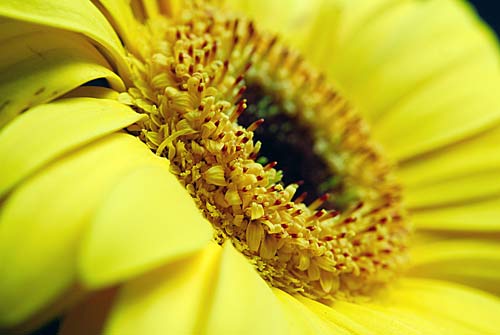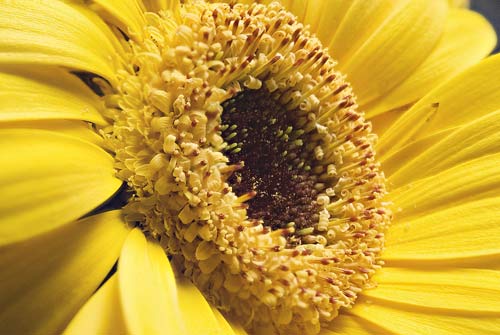If you are a photographer then, like me, you may have been put off attempting close-up photography because of the difficulty of getting sharp focus from the front to the back of the object you are photographing.
Sometimes it is desirable to have part of the object out of focus, but what do you do if you want to photograph a fly or a bee and have its head and its back legs all in focus?
Depth of Field
Depth of field as used in photography refers to how much from the front to the back of a scene is in acceptable focus. The scene further behind and nearer than what is in focus is, of course, out of focus and blurred.
We expect some things to be blurred and the way our brains are wired, we expect that blurring to show in a particular way. Because of the way we perceive reality we expect – for example – a tree in the foreground to be sharp and hills in the far distance to be out of focus.
In fact, if we saw a photograph with the tree in the foreground in focus and the hills in the distance also in focus, we would think the scene looked artificial. This is precisely because it breaks our internal rules about what should be in focus and what should not.
The nearer we get (or the camera gets) to an object, the smaller the depth of field. In other words the front-to-back distance of what is in focus, is very small. We see this when we hold a book open in front of us with the page at an oblique angle. Some of the print is in focus, but some that is only a few inches nearer or further away is not in focus.


One thing about the way our brains work though, is that with objects that are very near, we don’t have rigid views about what should or should not be in focus. Therefore, if we were to see a close up photograph of a flower that was all in focus, we wouldn’t think it looked artificial.
But the fact remains that the nearer we get to an object, the smaller the depth of field.
So what is a photographer to do if he or she wants to photograph something that is very near the camera – and wants to get everything in focus?
Small Apertures
One way is to set the aperture of the lens to the minimum possible. The aperture simply describes the hole in the lens through which light enters the camera. The size of the hole can be made bigger or smaller to suit the photograph that is being taken. Most modern lenses can be closed down to a very small hole.
But even at the smallest aperture the depth of field for objects that are very near the lens can be just a fraction of an inch. That isn’t enough to make everything from front to back of an object that is near to the lens appear sharp.
Also, for subjects that are very close to the lens, small apertures degrade the image because of the effect of diffraction. Diffraction causes the light around the edge of the hole in the lens to scatter and spill light all over the image, blurring it.
As a side note, we might wonder why lenses that can shut down to small apertures are made if they suffer from this diffraction problem? Well, for objects further from the camera the effect of diffraction is not so noticeable. Also, small apertures are useful for cutting down the amount of light that enters the camera – for example when a photographer is shooting a scene in bright daylight.
However, if depth of field is small and diffraction is a problem with objects close to the lens, we need another approach.
Focus Stacking
One way is to take several shots working from back to front, each time focusing on a different part of the object. Then combine each photograph to make one photograph with everything in focus.
It’s not as easy as it sounds because each time the camera is re-focused, the size of the object changes slightly. So what is needed is an automatic way of stacking the individual frames to produce one sharp image.
That’s where focus stacking software comes in. Feed several images in and the program creates a composite based on the sharpest plane of focus of each of the images.
These two images of a yellow gerbera flower were both taken with a medium aperture. The first is just one photograph. The second photograph is a composite of several photographs, each focusing a slightly different distance into the image.
Focus Stacking Software
I’ve just started to use a program called ZereneStacker to produce this kind of photograph. I need to refine my technique because the program is unforgiving of small errors. But I am hooked on the idea because making close-up photographs is something I have been interested in for a long time, but until recently I didn’t know this kind of program existed. There are a couple of other similar programs I want to look into, and I’ll post the results here. If they work out well, we will add the photographs to the Quillcards ecard collection.
You can send distinctive ecards featuring our photographs by Joining Quillcards.